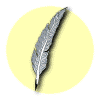









 According to mythology, Kea was the residence of the Nymphs of the forest springs who embodied the "liquid element". The island's old name was "Ydroussa" (Water Island). The Gods envied its beauty and sent a fearsome lion to persecute the Nymphs, who took refuge to the northern shores and from there to Karistos. Then, a long period of dryness began, the water levels decreased and the vegetation withered.
The islanders asked for the help of Aristaios, son of Apollo and the nymph Kirini, who lived in Thessaly. He came to the island and built a sanctuary to honour the Ikmaios Zeus, the god of rain. Gods were pacified and the draught was reduced. Aristaios organised the agriculture and gave special emphasis to apiculture, of which he is considered the "Father".
Another myth tells us that Kea took its name from Keos, son of Apollo and the nymph Rodessi, leader of the Locrians of Nafpaktos, who settled the island in prehistoric times.
The first settlers of Kea are believed to have been the Telchines. As excavation findings show, the island has been inhabited since prehistoric times and was one of the centres of Cycladic civilisation. It was the birthplace of many great figures from antiquity, like Simonides and the sophist Prodicus. Kea was known for the "Kean Law", a custom according to which those who lived to be seventy committed suicide by drinking hemlock.
The island's decline started in Roman times.
In 1207, it was given to the Venetians, then divided into four different administrative sections. One of the Venetian rulers, D. Mikelis, founded the island's castle on the site of ancient Ioulida.
In 1537, the island fell to the Turks, exhausted as it was by pirate raids. During the Russian-Turkish war and after the defeat of Lambros Katsonis, it suffered hell on earth. The idea of a revolution against the Turks started to gain ground gradually among the
islanders. The revolution was finally declared by Kea's Metropolitan Bishop, Nikothimos Roussos. The priest, Athanasios Homatianos, raised the war flag after Easter service in 1821.
Kea was liberated in 1830 and the borough of Kea was founded in 1835.
According to mythology, Kea was the residence of the Nymphs of the forest springs who embodied the "liquid element". The island's old name was "Ydroussa" (Water Island). The Gods envied its beauty and sent a fearsome lion to persecute the Nymphs, who took refuge to the northern shores and from there to Karistos. Then, a long period of dryness began, the water levels decreased and the vegetation withered.
The islanders asked for the help of Aristaios, son of Apollo and the nymph Kirini, who lived in Thessaly. He came to the island and built a sanctuary to honour the Ikmaios Zeus, the god of rain. Gods were pacified and the draught was reduced. Aristaios organised the agriculture and gave special emphasis to apiculture, of which he is considered the "Father".
Another myth tells us that Kea took its name from Keos, son of Apollo and the nymph Rodessi, leader of the Locrians of Nafpaktos, who settled the island in prehistoric times.
The first settlers of Kea are believed to have been the Telchines. As excavation findings show, the island has been inhabited since prehistoric times and was one of the centres of Cycladic civilisation. It was the birthplace of many great figures from antiquity, like Simonides and the sophist Prodicus. Kea was known for the "Kean Law", a custom according to which those who lived to be seventy committed suicide by drinking hemlock.
The island's decline started in Roman times.
In 1207, it was given to the Venetians, then divided into four different administrative sections. One of the Venetian rulers, D. Mikelis, founded the island's castle on the site of ancient Ioulida.
In 1537, the island fell to the Turks, exhausted as it was by pirate raids. During the Russian-Turkish war and after the defeat of Lambros Katsonis, it suffered hell on earth. The idea of a revolution against the Turks started to gain ground gradually among the
islanders. The revolution was finally declared by Kea's Metropolitan Bishop, Nikothimos Roussos. The priest, Athanasios Homatianos, raised the war flag after Easter service in 1821.
Kea was liberated in 1830 and the borough of Kea was founded in 1835.
http://www.areianet.gr/infoxenios/
